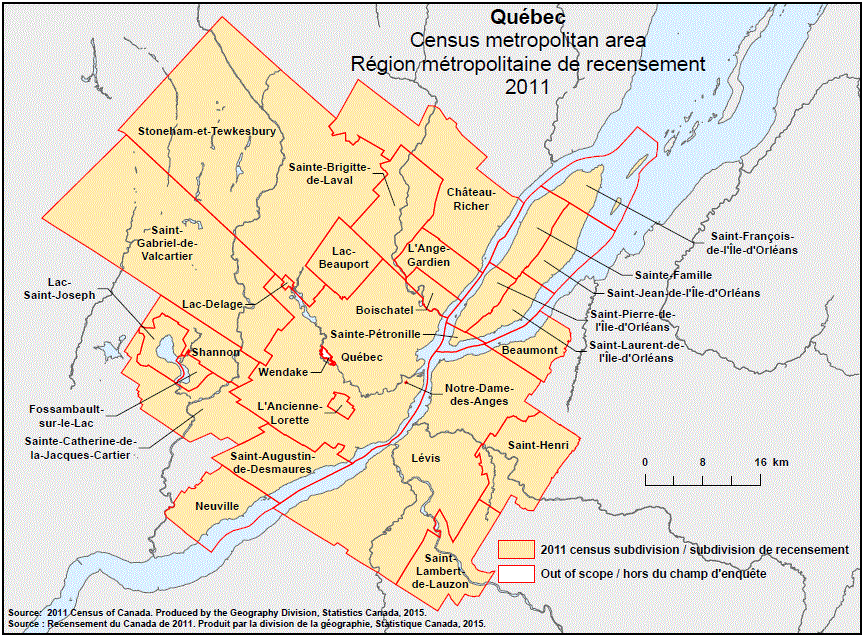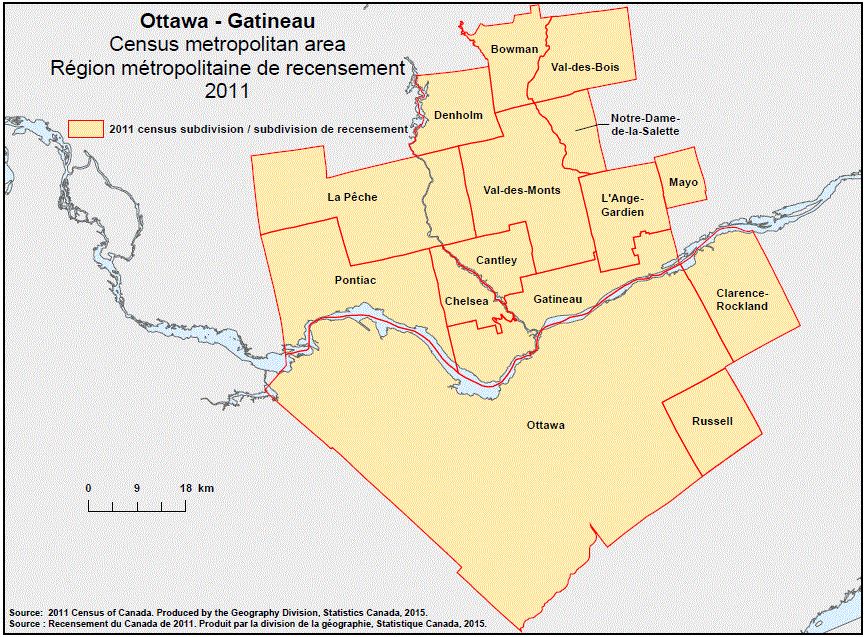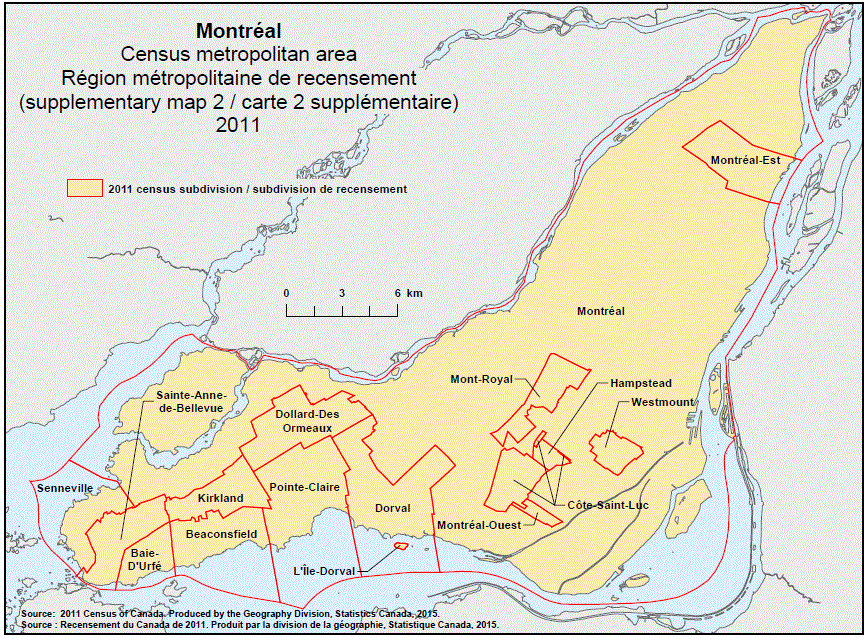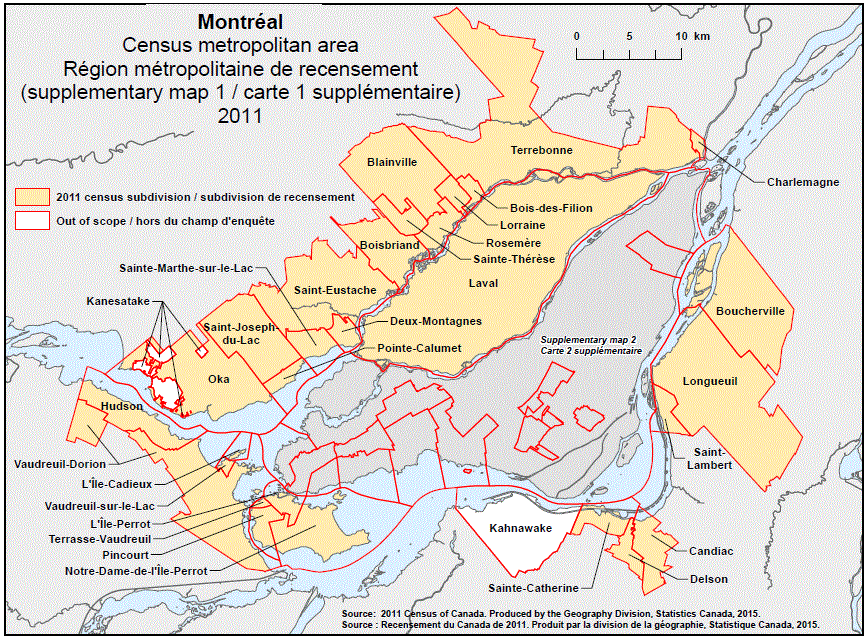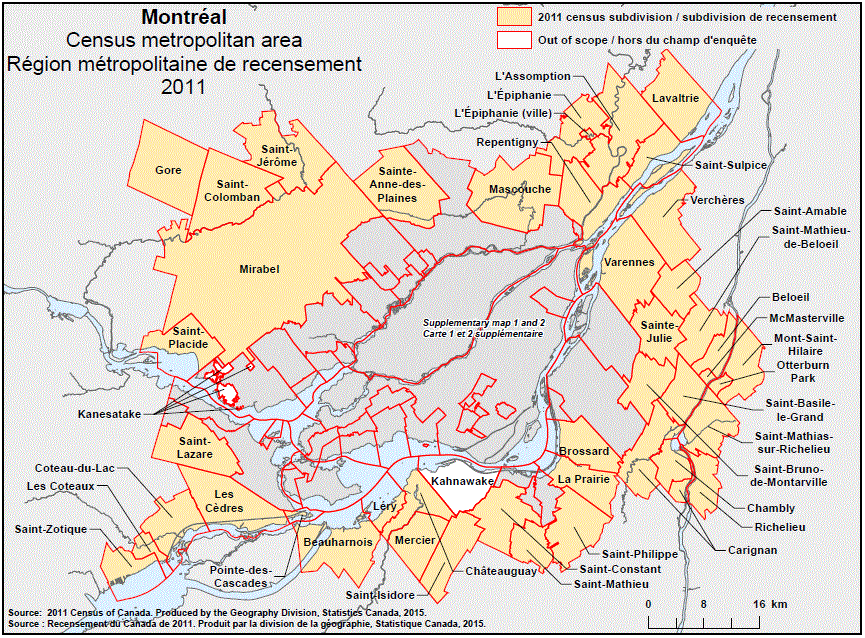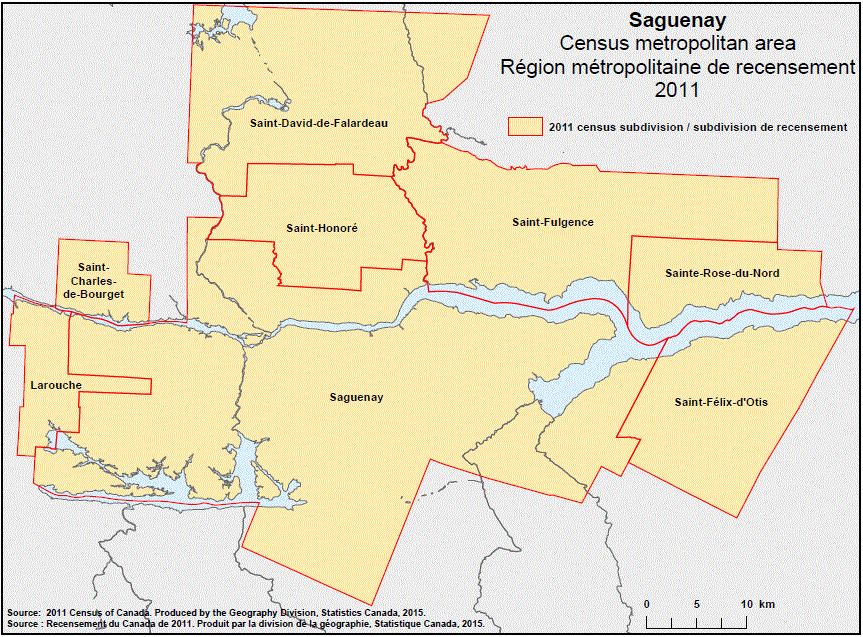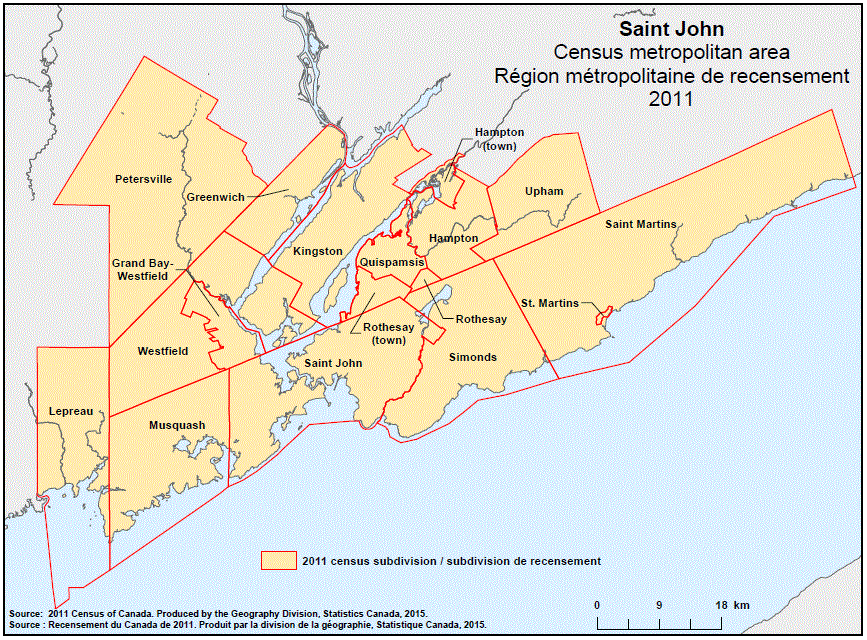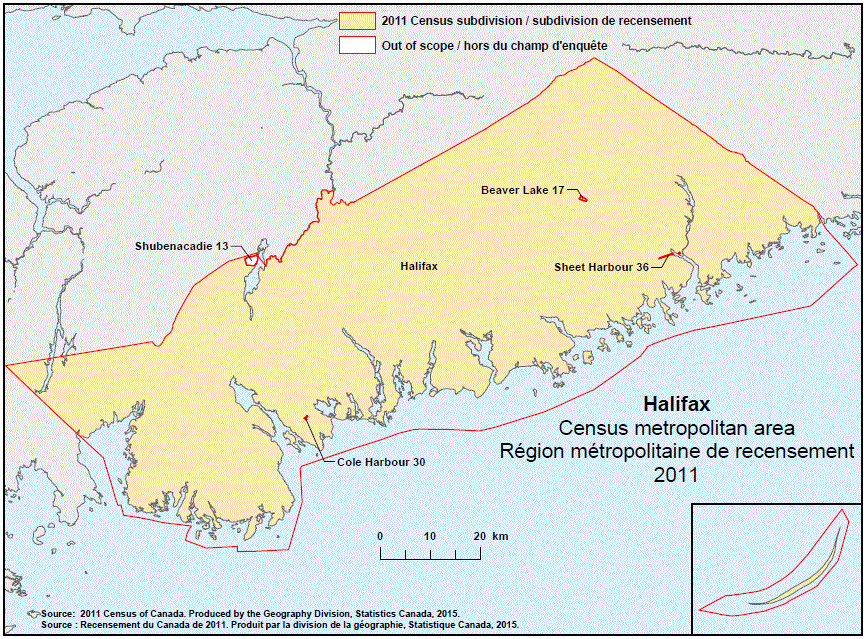General Information
This information is collected under the authority of the Statistics Act, Revised Statutes of Canada, 1985, Chapter S-19. COMPLETION OF THIS QUESTIONNAIRE IS A LEGAL REQUIREMENT UNDER THIS ACT.
Survey purpose
This survey is to collect up-to-date information on the production and value of greenhouse plants and vegetables and the production of nursery stock and sod grown in Canada. The results are publicly released in April and are used by producer associations and governments to assess the economic health of the greenhouse, sod and nursery production industries. Your information may also be used by Statistics Canada for other statistical and research purposes.
Data-sharing agreements
To reduce respondent burden, Statistics Canada has entered into data-sharing agreements with provincial and territorial statistical agencies and other government organizations, which have agreed to keep the data confidential and use them only for statistical purposes.
Information on data-sharing agreements can be found on page 13 of this questionnaire.
Confidentiality
Your answers are confidential.
The Statistics Act protects the confidentiality of information collected by Statistics Canada.
Statistics Canada is prohibited by law from releasing any information it collects which could identify any person, business, or organization, unless consent has been given by the respondent or as permitted by the Statistics Act. Statistics Canada will use the information from this survey for statistical purposes.
Your participation is important
Your participation is vital to ensuring that the information collected in this survey is accurate and comprehensive as it will be used for programs to assist growers.
Record linkages
To enhance the data from this survey, Statistics Canada may combine it with information from other surveys or from administrative sources.
Instructions to Greenhouse/Nursery/Sod Operator
- Please complete the enclosed questionnaire and return it before January 30, 20XX to Statistics Canada in the postage paid envelope enclosed.
- Please answer all questions that apply to your operation.
- Use your records if possible. Otherwise, enter your best estimate.
- Thank you for your cooperation.
Main Respondent
- Given name and initial(s)
- Family name
- Telephone number
- Fax number
- Other telephone number
- Number and street name
- Post office (name of city, town or village where mail is received)
- Province
- Postal code
- E-mail address (if applicable)
Alternate Respondent
- Given name and initial(s)
- Family name
- Telephone number
- Fax number
- Other telephone number
- Number and street name
- Post office (name of city, town or village where mail is received)
- Province
- Postal code
- E-mail address (if applicable)
Alternate Respondent
- Given name and initial(s)
- Family name
- Telephone number
- Fax number
- Other telephone number
- Number and street name
- Post office (name of city, town or village where mail is received)
- Province
- Postal code
- E-mail address (if applicable)
Part I - TYPE OF PRODUCTION
1. Did you grow greenhouse, nursery, sod products or Christmas trees in 20XX?
- Yes
- No (If no, go to comments on page 13)
2. Which of the following products did you grow in 20XX? (check all that apply)
- Greenhouse products (vegetables, fruits, flowers and plants) (Go to Part II)
- Nursery products and Christmas trees (trees and plants) (Go to Part III, page 9)
- Sod (Go to Part IV, page 12)
Part II - Greenhouse Operations (See explanatory notes)
C. Area and Number of Months of Operation
3. Will you be reporting your greenhouse area in:
- Square feet
- Square metres
(Exclude non heated covering tunnels.)
4. What was your total greenhouse area under glass in 20XX?
5. What was your total greenhouse area under poly-film in 20XX?
6. What was your total greenhouse area under rigid plastic, fibreglass or other enclosed areas in 20XX?
7. What was your total greenhouse area in 20XX?
8. How many months was your greenhouse in operation in 20XX?
Greenhouse Vegetables and Fruits
9. Did you grow and sell vegetables or fruits in 20XX? (exclude vegetable bedding plants/transplants )
- Yes
- No (If no, go to Question 12)
D. Area, Production and Value of Greenhouse Vegetables and Fruits - 20XX
10. Report area, production and sales of greenhouse vegetables and fruits in 20XX in the table below
Will you be reporting production in:
- Greenhouse tomatoes
- Greenhouse cucumber
- Greenhouse peppers
- Greenhouse lettuce
- Other greenhouse vegetables or fruits (please specify)
- Total area and gross sales of vegetables and fruits
E. SALES OF GREENHOUSE VEGETABLES AND FRUITS (before sales tax)
11. Report your total sales (Code C0190) according to the manner in which they were sold.
Will you be reporting sales in:
- Sales to domestic wholesalers
- Sales to mass market chain stores
- Sales to other greenhouses
- Exported sales made directly by your firm
- Sales to the public from your greenhouse, roadside stand or other outlets
- Sales to other channels
- Total vegetable and fruit sales (code C1016_1 = C0190)
Greenhouse Flowers and Plants
12. Did you grow and sell flowers or plants in 20XX? (include bedding plants)
- Yes
- No (If no, go to Section K)
F. Indoor and Outdoor Potted plants, Finished Products
13. Did you produce and sell potted plants in 20XX?
- Yes
- No (If no, go to Question 15)
14. Indoor Potted Plants
- Azaleas
- Lilies
- Poinsettias
- African Violets
- Tropical Foliage and green plants (include ferns, exclude hanging pots)
- Gerberas
- Miniature Roses
- Orchids
- Kalanchoe
- Chrysanthemums (potted mums)
- Primula
- Cyclamen
- Tulips
- Indoor Hanging Pots
- Other indoor plants
Outdoor Potted Plants
- p. Begonias
- q. Chrysanthemums (garden)
- r. Geraniums (in pots only)
- s. Impatiens
- t. Petunias
- u. Herbaceous Perennials
- v. Argyranthemum
- w. Outdoor Hanging Pots
- x. Other outdoor plants in pots
- y. Total potted plants (indoor and outdoor) produced and sold
- z. Total gross sales of finished potted plants
G. Cuttings and Tree Seedlings
15. Did you produce and sell cuttings or tree seedlings in 20XX?
- Yes
- No (If no, go to Question 17)
16.
- a. Chrysanthemums
- b. Poinsettias
- c. Geraniums
- d. Impatiens (only double and New Guinea)
- e. Other cuttings
- f. Total cuttings produced and sold
- g. Tree seedlings produced and sold
- h. Total gross sales of cuttings and tree seedlings
H. Vegetable and Ornamental Bedding Plants (transplants)
17. Did you produce and sell bedding plants in 20XX?
Include plants ready for transplant by the purchaser into gardens, fields, containers and baskets.
- Yes
- No (If no, go to Question 18)
- Total number of ornamental bedding plants (transplants)
- Total gross sales of ornamental bedding plants (transplants)
- Total number of vegetable bedding plants (transplants)
- Total gross sales of vegetable bedding plants (transplants)
I. Cut Flowers
18. Did you produce and sell cut flowers in 20XX? (exclude dried cut flowers)
- Yes
- No (If no, go to Question 20)
19.
- Alstroemeria
- Chrysanthemums (Standard & sprays)
- Daffodils
- Freesia
- Gerbera
- Iris
- Lilies
- Roses
- Snapdragons
- Tulips
- Lisianthus
- Other cut flowers
- Total stems produced and sold
- Total gross sales of cut flowers
J. Distribution of Sales for Greenhouse Flowers and Plants Only (before sales tax)
20. Please report your total sales of flowers and plants.
- Sales values of flowers and plants produced in your greenhouse (sum of [codes C0276, C0179, C0274, C0275 and C0154])
- Excluding values reported in question 20a, what is the value of your immediate resale of plants and flowers (include sales of flowers that your operation imported or purchased from other greenhouses for resale).
- Total sales of flowers and plants from your operation (sum of C2070 +C2071).
Report your total sales (code C0137), according to the manner in which they were sold.
Will you be reporting sales in:
- Sales to retail florists (e.g., flower shops, garden centres)
- Sales to domestic wholesalers (including Dutch Auction Clock System)
- Sales to mass market chain stores
- Sales to other greenhouses
- Exported sales made directly by your firm
- Sales made directly to the public from your greenhouse or road side stands
- Sales to government and other public institutions (e.g., municipalities, school boards or provinces)
- Sales to other channels
K. Plant Material Purchases (before sales tax)
If you operate both a greenhouse and a nursery and are unable to provide a breakdown of expenditures of plant material or labour separate from your greenhouse and nursery, you will be able to report your values together during the interview.
21.
- a. What were your total expenses in 20XX on flowers, plants, cuttings, seedlings, seeds or bulbs for growing on?
- b. What percentage of your expenditures reported in the previous question were purchases from other greenhouses or nurseries within your province?
22. Did you buy flowers, plants, cuttings, seedlings, seeds or bulbs in 20XX for immediate resale?
- Yes
- No (If no, go to Question 25)
23. What were your expenses in 20XX on flowers, plants, cuttings, seedlings, seeds and bulbs for immediate resale?
24. Total expenditures on plant material in 20XX (sum of codes C0123 and C0124)
L. Labour
Please include owners, family workers and foreign seasonal workers in the following labour questions
25. How many seasonal workers did your greenhouse employ (less than 8 months) in 20XX?
26. How many permanent workers (full-time and part-time) did your greenhouse employ (8 months and more) in 20XX?
28. Total number of greenhouse employees (C2022 + C2023)
29. What was your total payroll (including owners' salaries) in 20XX?
M. Other Greenhouse Expenses
30. Fuel expenses
- Natural Gas
- Heating oil
- Other types of heating fuel (i.e. coal, wood chips) (specify)
- Total fuel expenses in 20XX (sum of codes C0115, C0116 and C0117)
31. Electricity (lighting, airflow fans and heating)
32. Other crop expenses (include fertilizer, pesticides, growing mediums, irrigation and pollination expenses; exclude plant material purchases)
33. Other operating expenses (interest, land taxes, insurance, packaging, repairs to farm buildings, machinery, agricultural equipment and vehicles and contract work)
34. Total operating expenses in 20XX (sum of codes C0125,C0122, C0121,C2024, C0114 and C0112)
Part III - Nursery Operations (See explanatory notes)
35. Did you cut and sell Christmas trees that were grown on this operation in 20XX?
- Yes
- No (If no, go to Question 38)
36. Will you report Christmas tree area in:
37. Report your area, production and sales of Christmas trees cut on your operation. (Include naturally established or planted areas, regardless of stage of growth, that are pruned or managed with the use of fertilizer or pesticides.)
Christmas trees producers that did not grow nursery products, go to question 45.
N. Nursery Operations
38. Did you grow or sell nursery products in 20XX?
- Yes
- No (If no, go to Question 45)
39. Will you report your nursery area in:
40. Please include land owned or rented in the following questions.
- Field area used for growing nursery stock in 20XX
- Container area used for growing nursery stock in 20XX
- What was your total area used for growing nursery stock in 20XX? (sum of codes C0603 and C2029)
41. Did your nursery operation use a cold frame or non heated covering tunnels for production?
O. Production and Sales of Field and Container Grown Nursery Stock
42. Report your nursery field and container production and sales in 20XX (exclude stock sold for resale, unsold inventory, Christmas trees and landscaping activities)
If no plants produced in the nursery operation were sold in 20XX, go to Question 43b.
- Trees – Conifer
- Trees – Fruit
- Trees - Shade/Ornamental
- Shrubs - Evergreen, Conifer
- Shrubs - Evergreen, Broadleaf
- Shrubs - Deciduous (include Roses)
- Vines
- Perennials, Annuals
- Small fruit bushes (eg. raspberry bush)
- Tree Seedlings
- Other
- Total gross sales of field and container grown nursery stock
P. Sales of Nursery Stock (before sales tax)
43.
- a. What were your total nursery sales for stock started by your firm or purchased for growing on in 20XX? (sum of codes C0541 and C0456)
- b. What were your total nursery sales of stock purchased for immediate resale in 20XX? (exclude sales from landscaping activities)
- d.Total dollar sales of nursery stock in 20XX (sum of codes C0217 and C0218)
44. Report your total sales (code C0219) according to the manner in which they were sold.
Will you be reporting sales in:
- Direct sales to the public
- Fruit stock sold to fruit growers
- Nursery stock sold to landscape contractors
- Nursery stock sold to garden centres
- Nursery stock sold to mass merchandisers (chain stores)
- Nursery stock sold to other growers
- Exported sales made directly by your firm
- Sales to public agencies (municipalities, school boards, provinces)
- Sales to other channels (e.g. forestry firms)
Q. Nursery Purchases of Plant Material (before sales tax)
45. In 20XX did your nursery operation purchase any ornamental or fruit trees, nursery stock, bedding plants, seedlings, cuttings or bulbs?
- Yes
- No (If no, go to Question 50)
46.
- a. What were your expenses in 20XX on plant material for growing on?
- b. What percentage of your expenditures reported in the previous question were purchases from other greenhouses or nurseries within your province?
47. Did you buy nursery stock for immediate resale in 20XX?
- Yes
- No (If no, go to Question 49)
48. What were your expenses in 20XX on nursery stock for immediate resale?
49. Total expenses on plant material in 20XX (sum of codes C0230 and C0231)
R. Labour and Total Operating Expenses For Nursery Operation Only
Please include owners, family workers and foreign seasonal workers in the following labour questions.
50. How many seasonal workers did your nursery operation employ (less than 8 months) in 20XX?
51. How many permanent workers (full-time and part-time) did your nursery operation employ (8 months and more) in 20XX?
52. Total number of nursery employees (C2055 + C2056)
53. What was your total payroll (including owners' salaries) in 20XX?
54. What were your other nursery operating expenses in 20XX? (Include fertilizer, pesticides, land taxes, interest, insurance, repairs, fuel, electricity, irrigation and pollination expenses. Exclude plant material purchases and labour costs.)
55. What were your total operating expenses in 20XX? (sum of codes C0232, C0216 and C2057)
Part IV - Sod Operations (See explanatory notes)
S. Area and Sales of Sod
56. Did you grow sod in 20XX?
- Yes
- No (If no, go to page 13)
57. Will you report your area of sod grown in:
58.
- What was your total sod area grown in 20XX?
- How much of your total sod area was grown for sale in 20XX?
59. What was your gross revenue from sod grown for sale on your operation in 20XX?
60. Did you buy sod for immediate resale in 20XX?
- Yes
- No (If no, go to Question 63)
61.
- What were your expenses on sod for immediate resale in 20XX? (before sales tax)
- What percentage of your expenditures reported in the previous question were purchases from other sod farms within your province?
62. What was your gross revenue from sod purchased for immediate resale in 20XX? (before sales tax)
63. Total sod sales (sum of codes C0634 + C0636)
T. Labour and Total Operating Expenses For Sod Operations Only
Please include owners, family workers and foreign seasonal workers in the following labour questions.
64. How many seasonal workers did your sod operation employ (less than 8 months) in 20XX?
65. How many permanent workers (full-time and part-time) did your sod operation employ (8 months and more) in 20XX?
66. Total number of sod employees (sum of codes C2058 + C2059)
67. What was your total payroll (including owners' salaries) in 20XX?
68. What were your other operating expenses for your sod operation in 20XX? (Include fertilizer, pesticides, land taxes, interest, insurance, repairs, fuel, electricity and irrigation expenses. Exclude sod purchases and labour costs.)
69. What were your total operating expenses for your sod operation in 20XX? (sum of codes C0633, C2060 and C2061)
Data-sharing Agreements
To reduce respondent burden, Statistics Canada has entered into data-sharing agreements with provincial and territorial statistical agencies and other government organizations, which have agreed to keep the data confidential and use them only for statistical purposes. Statistics Canada will only share data from this survey with those organizations that have demonstrated a requirement to use the data.
Section 11 of the Statistics Act provides for the sharing of information with provincial and territorial statistical agencies that meet certain conditions. These agencies must have the legislative authority to collect the same information, on a mandatory basis, and the legislation must provide substantially the same provisions for confidentiality and penalties for disclosure of confidential information as the Statistics Act. Because these agencies have the legal authority to compel businesses to provide the same information, consent is not requested and businesses may not object to the sharing of the data.
For this survey, there are Section 11 agreements with the provincial statistical agencies of Newfoundland and Labrador, Nova Scotia, New Brunswick, Quebec, Ontario, Manitoba, Saskatchewan, Alberta and British Columbia.
The shared data will be limited to information pertaining to business establishments located within the jurisdiction of the respective province.
Section 12 of the Statistics Act provides for the sharing of information with federal, provincial or territorial government organizations. Under Section 12, you may refuse to share your information with any of these organizations by writing a letter of objection to the Chief Statistician and returning it with the completed questionnaire. Please specify the organizations with which you do not want to share your data.
For this survey, there are Section 12 agreements with the statistical agency of Prince Edward Island as well as the Department of Natural Resources Forestry and Agrifoods Agency of Newfoundland and Labrador, the New Brunswick Department of Agriculture, Aquaculture and Fisheries, the Ontario Ministry of Agriculture, Food and Rural Affairs, the Manitoba Department of Agriculture, Food and Rural Development, the Saskatchewan Ministry of Agriculture and the British Columbia Ministry of Agriculture.
For agreements with provincial government organizations, the shared data will be limited to information pertaining to business establishments located within the jurisdiction of the respective province.
Comments
20XX Annual Greenhouse, Sod and Nursery Survey — Explanatory notes
The purpose of the enclosed questionnaire is to collect information about the GREENHOUSE, SOD, NURSERY and CHRISTMAS TREE industries in Canada. These explanatory notes are provided to answer any questions you may have while completing this survey. If your operation is involved in “service” related activities such as landscape contracting or laying sod, please exclude the figures related to the non-agricultural portion of your operation from the attached survey.
Section C — Area and Months in Operation
Note:
The area and plants (including vegetable plugs) covered by cold frames or covering tunnels SHOULD NOT BE included in the greenhouse section of the survey. This is not considered to be part of the greenhouse area. A cold frame is not a greenhouse.
Question C4: Report only the area under glass.
Exclude: Area surrounding the greenhouse(s), i.e. nursery, retail garden centre, wheat field, etc.
Question C5: Report total area under poly-film or polyethylene. Poly film is a thick, flexible, translucent material that is used to build the greenhouse walls and roof.
Question C6: Include all other types of enclosed protection used for growing plants, i.e. rigid insulation, mine shafts, barns, shelters. Report poly-film plastic area in C5.
Question C8: Exclude months when operator was not actively growing plants i.e. fumigation period.
Section D — Area, Production and Value of Greenhouse Fruits and Vegetables — 20XX
Question D10: Report edible produce ready to consume.
Exclude: Bedding plants (transplants), tobacco, ginseng, asparagus or mushrooms.
Multiple crop plantings:
If you produced multiple crop plantings of the same greenhouse fruits/vegetables in the same greenhouse space, report area only once, but report all production and value (i.e. if 1000 ft2 were used for the 1st tomato crop planting producing 2000 lbs and the same area was used for the 2nd tomato crop planting producing 1500 lbs- report 1000 ft2 and 3500 lbs.).
If you produced multiple crop plantings of two or more greenhouse vegetables in the same greenhouse space, use the following format (i.e. if you use 2000 ft2 to grow tomatoes for your 1st crop and switch to cucumbers ½ way through the summer [using the same space, 2000 ft2], you should report your total area as 4000 ft2 [2000 ft2 for tomatoes and 2000 ft2 for cucumbers]).
Please report OTHER greenhouse fruits and vegetables (not listed in questions 10a-d) in 10e.
Section E — Sales of Greenhouse Fruits and Vegetables (before sales tax)
Question E11: Please report which avenues you sold your fruits and vegetables through, be it wholesalers, mass market chain stores, through the export market, to the public, etc.
Section F — Indoor and Outdoor Potted Plants, Finished Products
Question F14: Please report the number of potted plants you grew and sold from your greenhouse. Please report Canadian production of ornamental finished potted plants only.
For the purpose of this survey, the term “hanging pots” refers to any type of hanging basket (plastic, peat moss, wicker, ceramic, etc.)
Exclude: Resale merchandise (plants that were bought and resold immediately without much care or maintenance), nursery stock (potted fall mums grown and sold from a nursery or potted shrubs such as Azaleas or Heather), lilies grown in a field and Christmas trees sold in pots.
Section G — Cuttings and Tree Seedlings
Question G16: Report your propagating material i.e. greenhouse grown cuttings (rooted or vegetative), tree seedlings (exclude nursery product grown in cold frame or non-heated tunnel) and any other cuttings you grew and sold (exclude immediate resale).
Exclude: Ornamental and vegetable bedding plants/transplants (this material should be reported in section H).
Section H — Vegetable and Ornamental Bedding Plants (transplants)
Questions H17a, H17b, H17c, H17d: Report total number of bedding plants sold in cell packs, trays or flats ready for transplant into gardens, fields, containers, baskets, pots or larger cell packs by the purchaser (exclude immediate resale).
Section I — Cut Flowers
Exclude: Immediate resale, dried cut flowers and cut flowers grown and cut from the field.
Section J — Distribution of Sales for Greenhouse Flowers and Plants (before sales tax)
Question J20a : Refers to all sales of plants and flowers cultivated inside the greenhouse. The value reported should be equal to the sum of sales values reported as potted plant sales, cuttings and tree seedling sales, bedding plant sales and cut flowers sales.
Question J20b : Refers to sales of plants and flowers that have been purchased for immediate resale. These plants and flowers are usually sold within a short time period with minimal maintenance. Some operations could purchase plants and flowers for immediate resale in order to attract customers with a larger diversity of products inside their stand. Plant material purchases for immediate resale will be reported later inside section K (Question 24).
Question J20c: Report all sales of flowers and plants that were either, produced and sold by your operation, or imported or bought within Canada and resold immediately and revenue from “renting out” plants in sales to other channels.
Question J21 : Report total flower and plant sales reported in question J20c by the manner in which they were sold (type of market). Respondents can report sales in dollars or in a percentage. The sum of values reported inside each category should equal total sales reported in cell C0137 or should be equal to 100 percent.
Exclude: Non-plant material such as garden centre products (i.e. fertilizer, peat moss, vermiculite, soil, seeds, etc.).
Section K — Plant Material Purchases (before sales tax)
* If you operate both a greenhouse and a nursery and are unable to provide a breakdown of expenditures of plant material or labour separate from your greenhouse and nursery, you will be able to report your values together during the interview.
Question K22a: Report purchases for growing on (starting a plant/seedling in your greenhouse by caring and maintaining for it by seeding, transplanting, fertilizing, etc. until it becomes a sellable product).
Exclude: Flowers, plants, cuttings, seedlings, seeds, and bulbs purchased for immediate resale (refer to question K24 for definition).
Question K22b: Only the percentage of expenditures on plant material used for growing on purchased from other greenhouses, nurseries, wholesalers or other channels from within your province should be reported in this question.
Question K24: Report expenses for immediate resale (buying and selling a plant within a short time period with minimal maintenance).
Section L — Labour
Questions L26 & L27: Only employees involved in the growing, maintaining and harvesting of greenhouse fruits/vegetables and plants should be reported here.
Include: The labour of the owner and family help.
Exclude: All labour used for retailing, clerical help and contract work (i.e. truck driver, landscaper).
Question L29: If you operate both a greenhouse and a nursery, please provide the labour, wages and benefits for the greenhouse portion only in this section.
Include: Paid benefits such as medical insurance, workers compensation, employment insurance, and pension plans.
Exclude: Wages and benefits paid to employees involved in retail, clerical help and contract work (i.e. truck driver, landscaper).
Section M — Other Greenhouse Expenses
Question M30: Please specify whether you used natural gas, heating oil or another type of fuel, such as wood or coal. Please write in the name of the other fuel you used. Please report your total fuel expense under code C0121*.
Question M32: Include crop expenses on fertilizer, pesticides and growing mediums such as soil, peat moss, vermiculite, perlite, sand, styrofoam, sawdust, pollination and irrigation.
Question M34: Report total operating expenses here (sum of codes C0125, C0122, C0121, C2024, C0114 and C0112).
Exclude: The cost of land purchases, buildings, equipment or machinery.
*Note: The total of C0115, C0116 and C0117 should equal code C0121.
Part III: Nursery Operations
Please exclude from this portion of the questionnaire figures relating to the greenhouse portion (if applicable) of your operation (see Part II: Greenhouse Notes).
Question 37: For Christmas Trees, report naturally established or planted areas, regardless of stage of growth, that are pruned or managed with the use of fertilizer or pesticides.
Section N — Nursery Area
Question N40: Only land used for growing or maintaining nursery stock during 20XX should be included. Report nursery container area (any plant sold in a container from your nursery) in code C2029 and field area in code C0603.
Question N41: The area and plants (including vegetable plugs) covered by cold frames or covering tunnels should be reported in the nursery section of the survey. This is not considered to be part of the greenhouse area.
Section O — Production and Sales of Field and Container Grown Nursery Stock in 20XX
Question O42:
Field Grown
Please report any field-grown trees, shrubs, vines, perennials, small fruit trees and any other field-grown nursery stock PRODUCED AND SOLD.
Include: All balled and burlapped, bare root and field potted stock.
Exclude: Immediate resale, container-grown nursery stock, Christmas trees (without the root system intact), greenhouse production, unsold inventory, value received for landscaping services.
Container Grown
Please report any container-grown trees, shrubs, vines, perennials, small fruit trees and any other container-grown nursery stock PRODUCED AND SOLD.
Include: All container sizes (less than 1 gallon, 1 gallon, 2 gallons and/or greater than 2 gallons).
Exclude: Immediate resale, field-grown nursery stock, Christmas trees (without the root system intact), greenhouse production, unsold inventory, value received for landscaping services.
Section P — 20XX Sales of Nursery Stock (before sales tax)
Question P43a:
Growing on — starting a plant/seedling on your nursery operation by caring and maintaining through seeding, transplanting, fertilizing, etc. until it becomes a sellable product (codes C0541 + C0456 = C0217).
Question P43b:
Immediate resale — the process of buying a tree, shrub, plant, seed, seedling, cutting, etc. and selling it within a short time period with minimal care or maintenance.
Question P43c:
Report TOTAL SALES of nursery stock in 20XX here (codes C0217 + C0218 = C0219)
Question P44i:
Include revenue from rentals, sales to brokers & forestry firms.
Section Q — Nursery Purchases of Plant Material
Question Q46: Enter the dollar value of stock purchased specifically for growing on.
Question Q48: Enter the dollar value of stock purchased specifically for immediate resale and not for cultivation purposes.
Sections R and T Labour (Nursery and Sod Operations)
Questions R50, R51, T64 and T65:
Permanent and Seasonal workers
Include: The number of workers in your operation involved in growing, maintaining and harvesting nursery stock and/or sod.
Exclude: Labour for retail services (sales clerks in garden centres, labour for contract work, laying sod, landscaping or installing shrubs at client’s homes).
Question R53 and T67:
Total Payroll
Include: Benefits such as medical insurance, worker’s compensation, employment insurance, pension plans as well as owners’, management and family members’ salaries.
Exclude: Wages for retail or contract work not related to the nursery and/or sod operation.
Part IV: SOD OPERATIONS
Section S — Sod
Question S59: Report all revenue from all sod grown for sale.
Question S61a: Report all sod purchased specifically for immediate resale and not cultivated by your firm.

